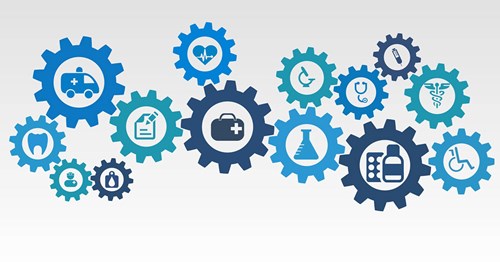RISE looks at recent headlines concerning social determinants of health (SDoH).

HHS updates interoperability standards for exchange of sexual orientation, gender identity, and SDoH
The U.S. Department of Health and Human Services’ (HHS) Office of the National Coordinator for Health Information Technology (ONC) last week released the United States Core Data for interoperability version 2 (USDCI v2), which sets an updated standard for interoperable health information exchange
The new update, which was developed based on the feedback from stakeholders calling for a reflection of diversity in the data elements to address health disparities among vulnerable an underrepresented individuals and communities, will equip health IT stakeholders with a “clearer direction toward the standardized, electronic exchange of social determinants of health (SDoH), sexual orientation, and gender identity (SO/GI) among several other updated data elements,” according to ONC, noting the COVID-19 pandemic underscored the need for more reliable data to better identify, target, and address such health needs.
The update, which includes three new data classes and 22 new data elements, aims to encourage the collection and use of SDoH and SO/GI data in a clinical setting, however, it does not require health professionals to record such data or individuals to share such data.
"The updated US Core Data for Interoperability takes an important step in reflecting the needs of all patients who access the nation's healthcare system," said Dr. Rachel Levine, HHS assistant secretary for health, in the announcement. "For accurate, compassionate, and safe care, it is important for a patient's sexual orientation and gender identity to be part of their care coordination and this new version helps prioritize next steps for the healthcare community as well as help identify patients' specific nonmedical needs—like housing, transportation, and poverty—that affect health to coordinate care and assistance to improve health outcomes."
Climate change as a SDoH–the new health crisis
The environment is an influential SDoH, and as climate change continues to shape the environment in which we live, it’s a clear determinant of health, according to Gary Cohen, co-founder and president of Health Care Without Harm, which was created 25 years ago to help transform the health care sector to be environmentally sustainable and support the health and climate resilience of the communities they serve.
In fact, climate change is the greatest health threat we face today, he wrote in a recent Health Affairs blog post.
As climate impacts continue to increase in frequency, low-income communities and people of color are disproportionately impacted due to high rates of preexisting conditions and limited resources. Air pollution is also more likely in the already vulnerable communities given polluting factories, waste dumps, and diesel truck routes are more likely to be sited in communities of color, noted Cohen. Even tree coverage is less in communities of color, causing up to 200 percent more heat-related deaths among Black people than non-Hispanic white people.
Given their position to provide credible information and guidance amid a health crisis, health care professionals and the health care sector as a whole play a critical role in the response to climate change.
“The health care sector occupies a unique position in US society both as an economic behemoth and as a profession with an ethical commitment to ‘do no harm,’” said Cohen. “That power and purpose can be leveraged to take on the twin crises of climate change and inequity.”
Some of the efforts to address the climate crisis within the health care sector already underway include a reduction in greenhouse gas emissions, home weatherization programs, and transitions to renewable energy.
New study finds social needs assessment critical to improve patient health outcomes
Social needs are actionable drivers of SDoH and directly affect the quality of life and survival in patients with cancer, according to a recent study published by American Cancer Society Journals.
To better understand the relationship between SDoH and health outcomes, researchers conducted a survey-based study of 135 women with gynecologic cancer at in the gynecologic oncology clinic at the Olive View-UCLA Medical Center. Most patients were immigrants who had very low household income.
Researchers screened social need factors associated with ER visits, hospital readmissions, and treatment interruptions. Most women had at least one unmet social need and more than 30 percent screened positive for distress. The most frequently reported need was help reading hospital materials, whereas social isolation and a lack of safety at home were associated with distress. A perceived lack of finances for health care and a lack of transportation were both associated with interruptions to treatment. Positive distress scores were interrupted due to comorbidities or treatment-related toxicities. Housing instability was also identified as an influential factor.
“A patient's race, sex, socioeconomic status, or distance from the hospital are not factors that can be modified by a health care system or individual provider to affect immediate health care outcomes. Conversely, social needs are more actionable downstream mediators than SDOHs, and these can often be met when identified,” explained study authors. “Although a clinic visit cannot raise a patient's literacy level, the identification of individuals who need help reading hospital materials can result in reflex action to allocate resources to this need, improving physician-patient communication and patient education efforts.”
Factors such as low health literacy, social isolation, lack of transportation, housing instability, and food insecurity are all social needs that, once identified, can be targeted and addressed to improve health outcomes, they noted.


